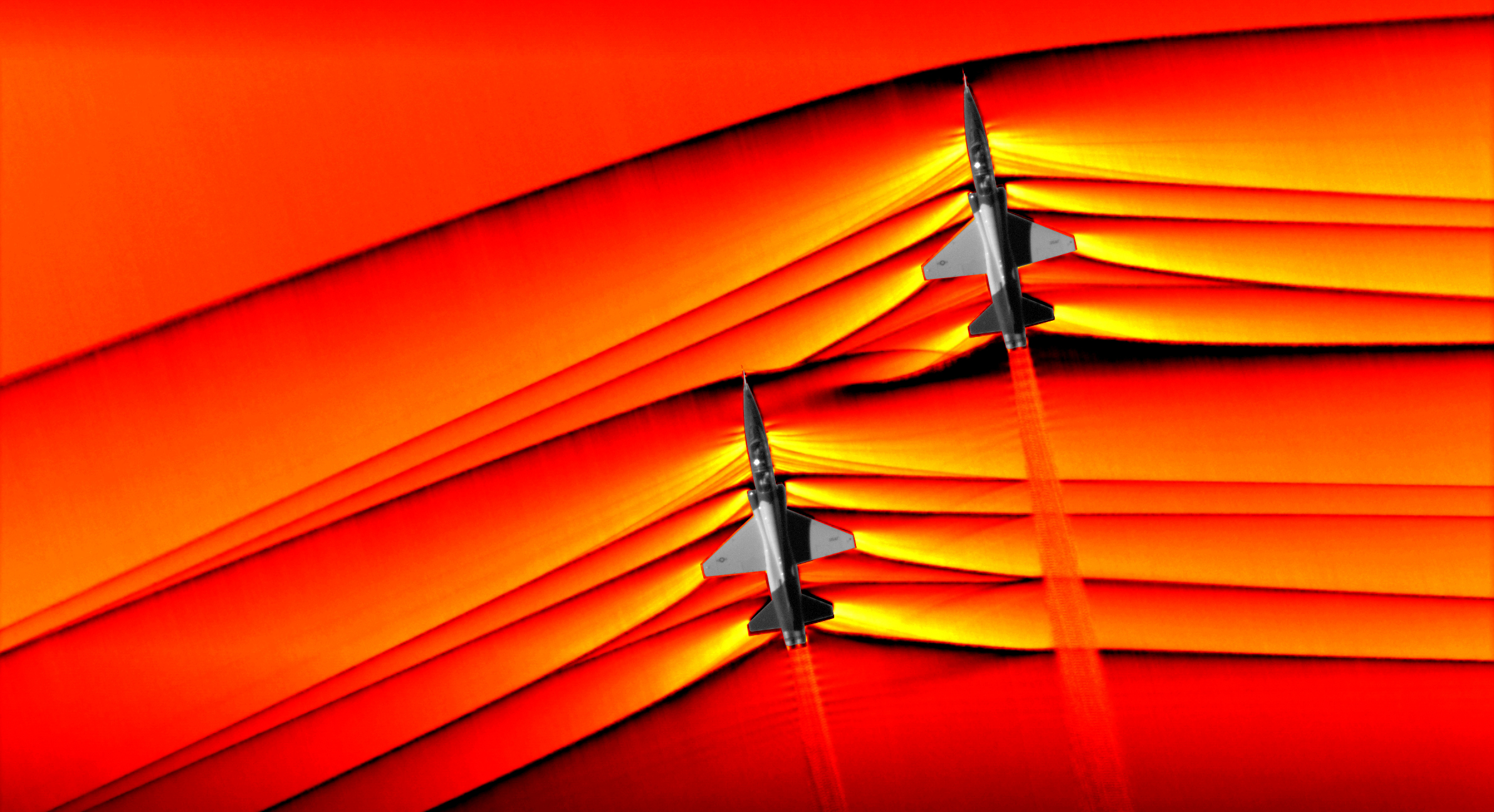NASA Just Captured the First-Ever Photos of Merging Supersonic Shock Waves

Two U.S. Air Force craft were traveling so fast — quicker than the speed of sound — and so close together that the shock waves emanating from the craft began to merge… and NASA was there to capture photographic proof.
The resulting snapshots are the first-ever photos of two supersonic shock waves (pressure waves) interacting in the air. And it's quite a sight: It looks as though the atmosphere folded up into a fresh batch of laundry. [Supersonic! The 10 Fastest Military Airplanes]
As an aircraft travels, it pushes the air in front of it and creates waves, just like a motor boat creates waves as it moves through the water.
But when aircraft travel faster than the speed of sound — or faster than 767 mph (1235 km/h) — it moves faster than the waves it creates. Because air molecules can't keep up with its speed, they begin to compress. This creates a rapid increase in pressure in front of the craft, resulting in a different kind of wave: supersonic shock wave. Though humans can't see these shock waves, we can hear them merging together as they move through the atmosphere as a thunder-like sound called a sonic boom.
In the recent event, NASA's air-to-air schlieren photographic technology captured images of mingling shock waves from two T-38 supersonic U.S. Air Force Test Pilot School airplanes. These craft fly about 30 feet (9 meters) from one another and at a 10-foot (3 m) difference in height, according to a NASA statement.
Snapped by another plane flying at about 2,000 feet (610 m) above the two fast-moving aircraft, the images captured how the shock waves became distorted or curved as they interacted. "We never dreamt that it would be this clear, this beautiful," J.T. Heineck, a physical scientist at NASA's Ames Research Center in California, said in the statement.
They also snapped a photo that they called a "knife-edge" shot of supersonic shock waves created by a single T-38. Shock waves created by a single aircraft look like straight lines emenating like a cone off the tip of the aircraft.
Get the world’s most fascinating discoveries delivered straight to your inbox.
Their camera was improved from previous models and included a wider field of view with the ability to collect 1,400 frames per second. The photos are part of a NASA flight series aimed at capturing high-quality images of shock waves; these photos will help scientists better understand how the shock waves form and interact. NASA and Lockheed Martin Skunk Works are currently designing an aircraft called the X-59 Quiet Supersonic Technology X-Plane that will not create sonic booms, but rather quiet rumbles, according to the statement.
By understanding how shock waves form and interact in the air, engineers hope to hone the aircraft's design and, eventually, show regulators that supersonic aircraft can be made quiet, NASA officials said in the statement. These quieter aircraft, in turn, may one day lead lawmakers to lift restrictions on supersonic aircraft flights over land.
- Image Gallery: Breaking the Sound Barrier
- The 10 Most Outrageous Military Experiments
- Ultrasonic waves are everywhere. Can you hear them?
Originally published on Live Science.

Yasemin is a staff writer at Live Science, covering health, neuroscience and biology. Her work has appeared in Scientific American, Science and the San Jose Mercury News. She has a bachelor's degree in biomedical engineering from the University of Connecticut and a graduate certificate in science communication from the University of California, Santa Cruz.
 Live Science Plus
Live Science Plus






